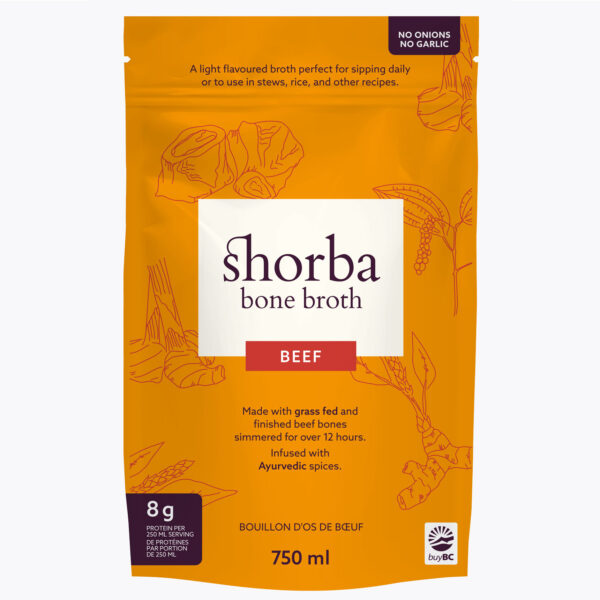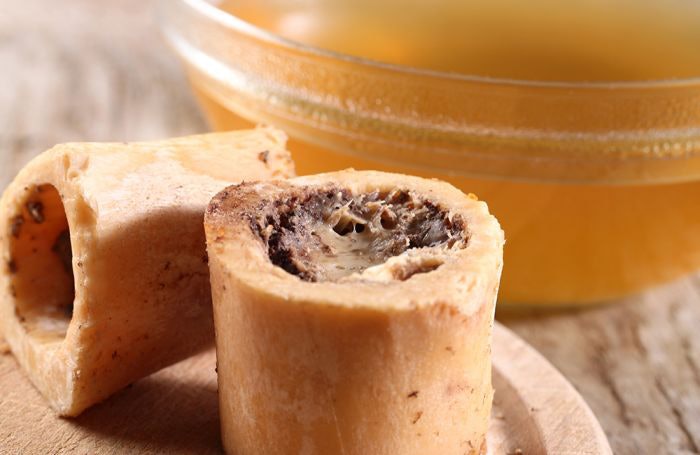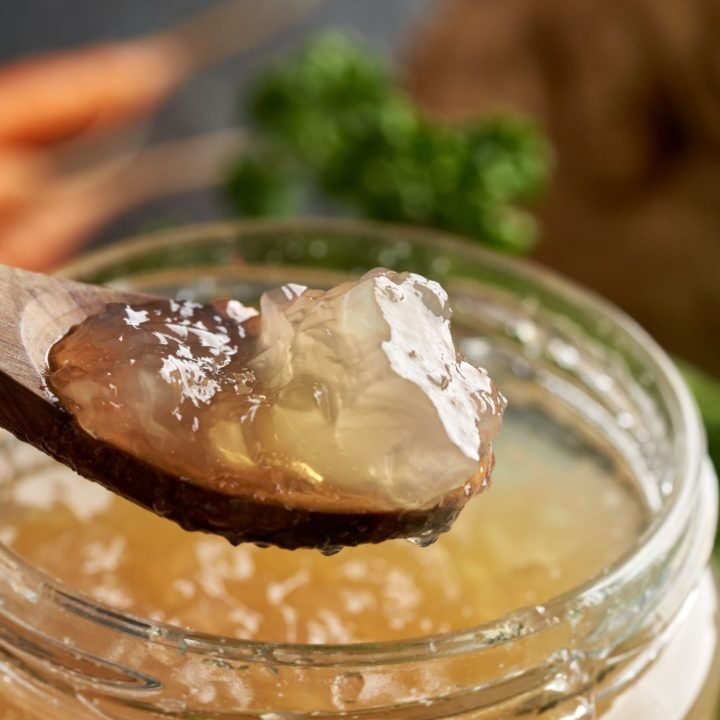Just How to Make Beef Bone Brew: A Step-by-Step Overview for Delicious Homemade Nourishment
Beef bone broth is a nourishing enhancement to any kind of kitchen area. It offers numerous wellness benefits and can boost a range of dishes. The procedure begins with choosing the ideal bones and components. Recognizing each step is crucial for attaining the very best flavor and splendor. Nonetheless, lots of home chefs ignore important methods that can elevate their broth. What are these techniques, and exactly how can they change a basic broth right into a cooking staple?
Comprehending the Benefits of Beef Bone Brew
While lots of people delight in the abundant taste of beef bone broth, they might not completely appreciate its many health and wellness advantages. This beneficial potion is recognized for its high collagen content, which supports joint health and promotes skin elasticity. The amino acids discovered in bone brew, such as glycine and proline, play substantial duties in muscular tissue repair and digestive system health and wellness. On top of that, it is abundant in minerals like calcium, magnesium, and phosphorus, necessary for keeping strong bones and total well-being. Bone brew additionally possesses anti-inflammatory properties, which can ease signs connected with persistent conditions. Consuming it might support gut health and wellness by improving the mucosal cellular lining of the gastrointestinal tract, promoting much better nutrient absorption. The heat and convenience of a steaming bowl of brew can offer a calming effect, making it a tasty and nourishing selection for individuals looking for both cooking pleasure and health and wellness benefits. Cooking Picking the Right Bones
The structure of a nourishing and delicious beef bone broth depends on the choice of bones. For optimal outcomes, it is vital to pick a selection of bones that provide an abundant mix of flavor and nutrients. Marrow bones, which consist of the fatty, gelatinlike marrow, are especially prized for their capacity to improve the brew's splendor. Joint bones, such as oxtails and knuckles, are also advantageous because they are high in collagen, adding to a silky structure. In addition, including some meaty bones can include deepness to the flavor account. Sourcing bones from pasture-raised or grass-fed cattle is suggested, as these alternatives have a tendency to offer remarkable top quality and preference. It is likewise important to determine the bones are fresh and cost-free from any repulsive smells. By very carefully picking the best bones, one can lay the groundwork for a delicious and beneficial beef bone broth.
Vital Ingredients for Flavorful Broth
To produce a savory beef bone brew, selecting high quality beef bones is crucial as they function as the structure of the recipe - Bone Broth Vancouver. Aromatic veggies and a cautious option of herbs and flavors better improve the brew's depth and complexity. With each other, these essential components add to a satisfying and abundant taste account
Quality Beef Bones
Quality beef bones work as the structure for a abundant and delicious broth. The most effective options include marrow bones, knuckle bones, and oxtails, each adding unique structures and tastes. Marrow bones are treasured for their jelly content, which helps produce a smooth mouthfeel. Knuckle bones, abundant in collagen, boost the broth's body and dietary profile. Oxtails provide a hearty taste and added richness. It is essential to resource bones from pasture-raised or grass-fed livestock, as this boosts the general quality and taste of the broth. Quality is likewise vital; bones must be used within a couple of days of acquisition or frozen for later use. Choosing top notch beef bones ensures a nourishing and tasty final item.
Aromatic Vegetables Choice
While picking fragrant veggies, one need to consider the duty they play in boosting the overall flavor account of the beef bone broth. Usual choices consist of onions, carrots, and celery, usually referred to as the "mirepoix." Onions add sweetness and depth, while carrots add a subtle earthiness. Celery supplies a renewing crispness that balances the splendor of the broth. Garlic, though optional, can introduce a durable flavor, enhancing the tasty notes of the beef. Leeks and shallots are additionally outstanding enhancements, using unique taste dimensions. For a tip of heat and complexity, some might consist of ginger or fennel. Selecting a mix of these aromatic vegetables guarantees a versatile and savory brew, setting the structure for a nourishing culinary experience.
Flavorful Herbs and Spices
Incorporating flavorful herbs and seasonings is crucial for raising the preference of beef bone brew, as they introduce aromatic complexity and deepness. Usual selections consist of bay leaves, which pass on a refined organic note, and thyme, known for its earthy taste. Rosemary, with its pine-like essence, includes a revitalizing touch, while parsley contributes illumination and quality. For a tip of heat, black peppercorns and garlic are exceptional additions, enhancing the brew's total splendor. In addition, pepper flakes or chili powder can introduce a gentle warm for those that like a little bit of spice. Selecting a well balanced mix of these active ingredients not only boosts flavor yet additionally infuses the broth with helpful nutrients, making it a tasty and beneficial alternative for any type of dish.
Preparing the Bones and Vegetables
To develop a abundant and savory beef bone broth, the prep work of bones and veggies is crucial. Selecting top quality beef bones, such as marrow, oxtail, or knuckle, is essential, as they give the necessary collagen and nutrients. Toasting the bones in the stove boosts their flavor, offering the brew a deeper, richer preference. It is a good idea to roast them at 400 ° F for regarding half an hour, until browned.Next, vegetables play a pivotal function in building flavor. Typical choices include onions, carrots, and celery, called the mirepoix base. These must be roughly cut to maximize flavor extraction during simmering. Garlic my blog and tomatoes can likewise be consisted of for added depth.Lastly, washing the veggies and bones under chilly water assists eliminate any type of impurities, making certain a clear brew. Correctly preparing bones and vegetables sets the foundation for a nourishing and delicious beef bone brew.
Food Preparation Methods: Stovetop vs. Slow Stove
The selection in between stovetop and slow cooker methods presents distinctive benefits when it comes to cooking beef bone brew. Stovetop food preparation allows for quicker results and more control over the simmering process, while slow-moving stoves provide ease and a prolonged mixture of flavors. Each technique has its one-of-a-kind benefits, accommodating various choices and timetables.

Stovetop Cooking Advantages
While both stovetop and slow cooker approaches have their values, stovetop food preparation supplies distinct benefits that can improve the process of making beef bone brew. One significant benefit is the capability to manage the temperature and simmering time much more specifically, which can lead to excellent extraction of nutrients and flavors from the bones. Additionally, stovetop food preparation enables for real-time changes, making it possible for the chef to keep an eye on the broth's consistency and taste throughout the process. The quicker food preparation time compared to slow down cookers can additionally be beneficial for those requiring brew in a much shorter timeframe. The stovetop approach encourages a hands-on strategy, promoting a deeper connection to the cooking process and potentially resulting in a much more savory end item.
Slow Cooker Advantages
Using a slow cooker for making beef bone broth supplies several unique benefits that interest many home chefs. One primary advantage is the ease of set-it-and-forget-it cooking. Once the active ingredients are incorporated, the slow stove can operate ignored for hours, enabling for a hectic routine without consistent surveillance. Furthermore, sluggish cookers preserve a constant low temperature level, which extracts nutrients and tastes successfully gradually without the danger of boiling, leading to a richer brew. The energy effectiveness of slow stoves likewise stands apart, as they make use of less power compared to stovetops (Best Bone Broths). Slow stoves frequently have programmable setups, making it possible for exact control over cooking times, which improves the overall ease of brew prep work.

Straining and Storing Your Brew
Stressing and storing beef bone brew is a vital step that assures a clear, tasty end product. Once the brew has simmered for the recommended time, it must be carefully poured through a great mesh strainer or cheesecloth right into a huge dish or pot. This process eliminates any kind of solids, such as meat, veggies, check my blog and bones, assuring a smooth consistency. To capture all flavor, pushing the solids gently with a spoon can be beneficial.After straining, the broth must cool down to space temperature before being kept. It is best to make use of airtight containers, such as glass jars or freezer-safe bags, to avoid fridge freezer melt and maintain quality. Identifying the containers with the date is additionally a good idea. The broth can be refrigerated for as much as a week or frozen for a number of months, making it a hassle-free enhancement to future dishes. Proper storage space assurances that the dietary advantages and flavors stay undamaged.
Imaginative Ways to Use Beef Bone Broth
Beef bone brew provides a functional structure for a range of recipes, enhancing both taste and nutrition. Home chefs can incorporate it right into stews and soups, giving an abundant base that grows the general taste. It can also be used as a cooking fluid for grains, such as rice or quinoa, infusing them with added nutrients and flavor.Additionally, beef bone brew acts as an outstanding foundation for sauces and sauces, lending intricacy and richness to dishes. For those seeking a healthy beverage, drinking cozy broth can be nourishing and comforting. It can also be made use of in healthy smoothies for a protein boost, though this may call for some imaginative taste balancing.Ultimately, beef bone broth not just elevates everyday dishes but likewise adds to a wholesome diet regimen, making it a staple ingredient for culinary fanatics and health-conscious people alike.
Frequently Asked Inquiries
The Length Of Time Can I Store Beef Bone Brew in the Refrigerator?
The More hints concern of storage space duration for beef bone broth in the fridge is necessary. Normally, it can be securely saved for concerning three to 5 days, guaranteeing freshness and high quality before intake or freezing for longer preservation.
Can I Freeze Beef Bone Broth, and for The length of time?
Beef bone brew can be frozen successfully, enabling extended storage. When correctly secured in impermeable containers, it can last up to six months in the fridge freezer, maintaining its taste and dietary benefits for later usage.
Is It Safe to Use Bones From a Food Store?
The safety of utilizing food store bones depends on their source and handling. If effectively sourced and kept, these bones can be safe for usage, supplying crucial nutrients when prepared correctly for brew.
Can I Make Beef Bone Broth in an Instant Pot?
The Instantaneous Pot is indeed suitable for making beef bone broth - Bone Broth Vancouver. Its pressure cooking attribute significantly minimizes cooking time while still removing abundant tastes and nutrients, making it a convenient option for active home chefs

What Nutritional Differences Exist In Between Beef and Hen Bone Brew?
The nutritional differences between beef and hen bone brew primarily depend on their collagen web content, amino acids, and mineral accounts. Beef broth usually contains even more collagen and minerals, while hen brew is usually lighter and simpler to absorb. The foundation of a savory and nutritious beef bone broth lies in the selection of bones. To create a flavorful beef bone broth, choosing high quality beef bones is crucial as they offer as the foundation of the recipe. The best alternatives consist of marrow bones, knuckle bones, and oxtails, each adding distinct textures and tastes. While picking fragrant vegetables, one have to think about the function they play in enhancing the general taste profile of the beef bone broth. To develop a abundant and delicious beef bone broth, the prep work of veggies and bones is crucial.